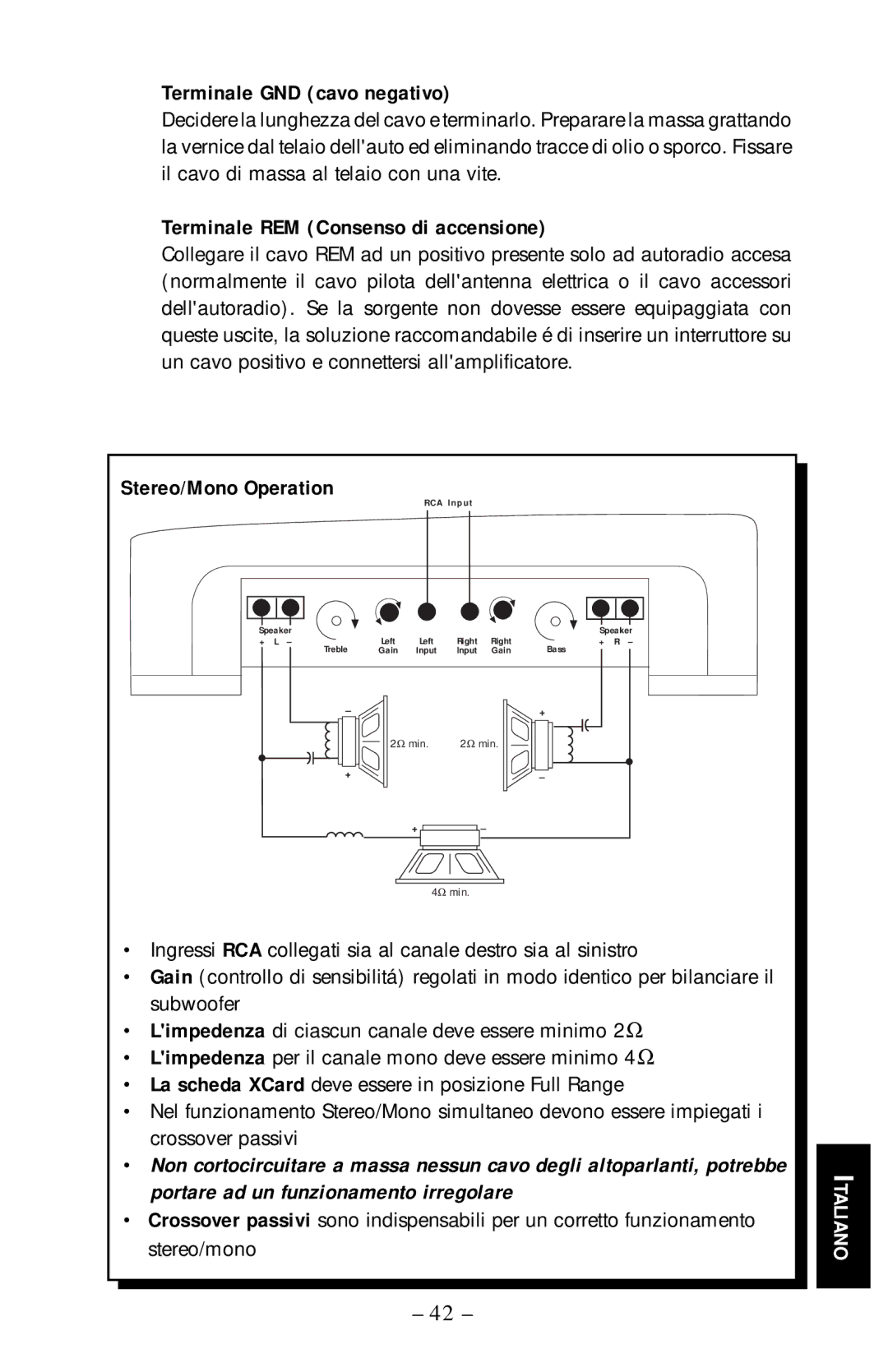225.2, 125.2, 55.2, 75.2 specifications
Rockford Fosgate has long been recognized for delivering high-quality audio solutions for car enthusiasts, and the 225.2, 125.2, 55.2, and 75.2 amplifiers are no exception. These amplifiers cater to various audio needs, whether you are looking to enhance the sound quality in your vehicle or set up a full-fledged audio system.The Rockford Fosgate 225.2 is a powerful two-channel amplifier that offers a maximum power output of 225 watts. It features a MOSFET power supply, providing excellent efficiency and reliability under load. The 225.2 also includes a low-pass filter and built-in crossover, enabling users to tailor the sound to fit specific audio preferences by adjusting the frequency response. Its sleek design and durable construction ensure it can withstand the demands of a mobile environment.
Meanwhile, the 125.2 amplifier is designed for those who want a compact yet powerful audio solution. This two-channel amplifier delivers 125 watts of peak power and incorporates advanced technologies such as a high-level input, allowing for easy integration into factory systems. The 125.2 also features adjustable bass boost to enhance low-frequency performance, making it an attractive choice for those who enjoy bass-heavy music genres.
On the other hand, the Rockford Fosgate 55.2 amplifier is a more compact offering. Despite its smaller size, it provides impressive sound quality and power output of 55 watts per channel. Ideal for adding an extra punch to factory speakers, the 55.2 utilizes a low-impedance design to maximize efficiency. It is particularly well-suited for entry-level audio systems, making it accessible for those just starting in car audio.
Lastly, the 75.2 amplifier strikes a balance between size, power, and versatility, delivering 75 watts per channel. With features like thermal and overload protection, the 75.2 ensures both safety and performance under stress. The compact form factor makes it easy to install in various vehicle models without sacrificing audio quality.
All of these amplifiers showcase Rockford Fosgate's commitment to sound quality, durability, and user-friendly design. Each model incorporates technologies that enhance performance while offering flexibility for customization, making them excellent choices for car audio enthusiasts looking to elevate their listening experience. Whether you need a compact solution for upgraded sound or a powerhouse for a full system, Rockford Fosgate has options that cater to every need.

